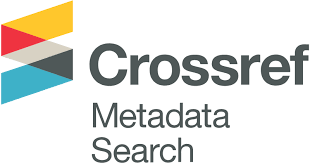ESP Design Optimization and Sensitivity Analysis for Oil Well (E-05) using Prosper software
DOI:
https://doi.org/10.58916/jhas.v8i3.94Keywords:
103 E oilfield, ESP, optimization, prosper software, Sensitivity Analysis.Abstract
The natural reservoir pressure is often sufficient to lift the fluids to the surface. However, when excessive water and gas production occurs, the reservoir pressure may no longer be sufficient. In such cases, an artificial lift method is required to lift the fluids to the surface. The objective of this study is to improve the efficiency of the ESP system and to identify the critical parameters that affect the system's performance of oil well E.05 using Prosper software. Results were obtained and analyzed to determine the optimal design for the well. In this paper, we discussed the ESP model and its impact on productivity. The ESP model is designed to optimize parameters such as reservoir pressure, pump sitting depth, operation frequency, and number of stages. Specifically, the model recommends a reservoir pressure of 3100 psi, a pump sitting depth of 5000 ft, an operation frequency of 60 HZ, and number of stages of 225 stages. By implementing these parameters, the ESP model has been shown to significantly improve productivity. This model boasts best pump and motor efficiency, making it a reliable choice for optimizing production. The oil flow rate for the well has increased from 916 STB / D to 1008 STB / D, indicating a successful current design for the well. Further research is needed to better understand the factors that affect ESP performance, such as wellbore conditions, fluid properties, and pump design.
Downloads
References
.Nguyen T, Artificial Lift Methods: Design, Practices, and Applications. 1st (Edn), Springer Nature, Germany, (2020), pp-347.
. Nguyen H, Del Mundo F, Improving Artificial Lift Design Through Dynamic Simulation, SPE North America Artificial Lift Conference and Exhibition, Society of Petroleum Engineering, Texas, USA, (2016) .
.Alemi M, Jalalifar H, Kamali G, Kalbasi M, (2010) A prediction to the best artificial lift method selection based on TOPSIS model. Journal of Petroleum and Gas Engineering Vol. 1(1), pp 009-015.
.Brown K E. Technology of artificial lift methods. Volume 1. Inflow performance, multiphase flow in pipes, the flowing well. United States: N. P., 1977.Web.
. O.J. Romero, “Subsea Electrical Submersible Pump Significance in Petroleum Offshore Production”, Universidade Federal do Espírito Santo, March 2013.
. Abdelhady A, Gomaa S*, Ramzi H, Hisham H, Galal A and Abdelfattah A, (2020), Electrical Submersible Pump Design in Vertical Oil Wells, Petroleum & Petrochemical Engineering Journal, ISSN: 2578-4846, Volume 4 Issue 5, MEDWIN PUBLISHERS.
.Bader Abdullah Alqahtani; et al. Electric Submersible Pump Setting Depth Optimization- A Field Case Study, Paper presented at the SPE Middle East Artificial Lift Conference and Exhibition, Manama, Bahrain, October 2022. https://doi.org/10.2118/206934-MS
. A. Suat Bagci, SPE, Murat Kece, SPE, ESP Performances for Gas-Lifted High Water Cut Wells, SPE Annual Technical Conference and Exhibition, Florence, Italy, 19–22 September 2010.
. Hamzah Amer Abdulameer, et al, (2020), Production Optimization for Natural Flow and ESP Well A Case Study on Well NS-5 Mishrif Formation-Nasriya Oil Field, ISSN: 2710-1096. Journal of Petroleum Research and Studies. VOL. 10 NO. 2: ISSUE 27. DOI: https://doi.org/10.52716/jprs.v10i2.342
. https://www.petex.com/products/ipm-suite/prosper/
. Kermit E. Brown, “The Technology of Artificial Lift Methods- Volume 2b”1980
. Brown, K.E. et al.: “The Technology of Artificial Lift Methods”, “Production Optimization of Oil and Gas Wells by Nodal Systems Analysis,” Penn Well Publishing Co., Tulsa, OK(1984), Vol. 4. (2)
. T. Ahmed, Reservoir engineering handbook (Gulf Professional Publishing, (2006), (3).















